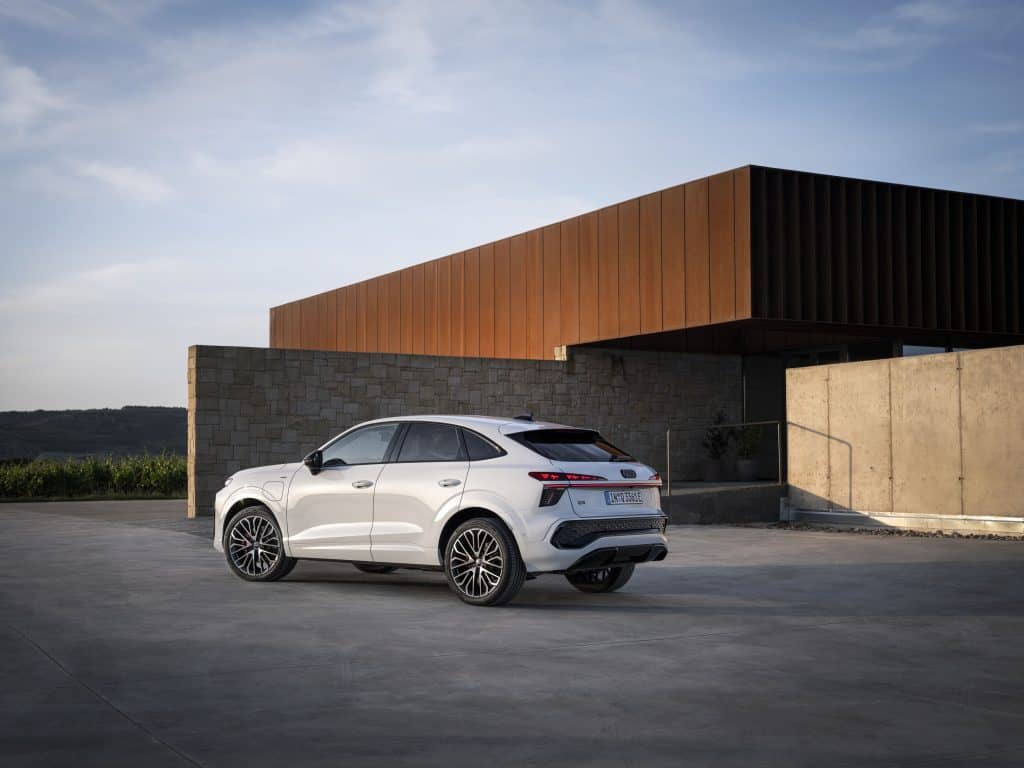
The redesigned Q3 and its Sportback variant present a more confident, dynamic silhouette, marked by a wide Singleframe grille, sharply tapered headlights, and a horizontal shoulder line that visually divides the car’s profile into striking light and shadow patterns. The Sportback emphasizes coupé-like styling with a roofline 29 millimeters lower than the SUV, offering a sleeker, faster appearance. At the rear, optional digital OLED tail lights, a continuous LED light strip, and illuminated rings create a visual signature previously reserved for larger Audis.
Inside, the Q3 adopts a “digital stage” previously exclusive to the full-size class. A panoramic display combines an 11.9-inch instrument cluster with a 12.8-inch MMI touch display, curving toward the driver for an intuitive, cockpit-like layout. The new steering wheel control integrates gear selection and lighting/wiper controls, freeing space in the center console. Audi’s commitment to comfort and sustainability is evident in its use of acoustic glazing, recycled polyester fabrics, and fast-growing, resistant timber for interior surfaces.
Lighting technology has also moved into the compact segment. The Q3’s digital Matrix LED headlights incorporate micro-LED modules that deliver precise illumination with up to 25,600 individual LEDs per unit. The system integrates with driver-assistance features, projecting lane guidance, lane-change alerts, and even warnings for icy roads directly onto the street. Digital daytime running lights, customizable coming/leaving home sequences, and optional OLED rear lights enhance safety while defining Audi’s new visual language.
Powertrains range from a 1.5-liter mild-hybrid four-cylinder producing 150 horsepower to a 2.0-liter turbocharged unit with 265 horsepower and quattro all-wheel drive. The Q3 also introduces a plug-in hybrid, pairing a 1.5-liter engine with a 130-kilowatt electric motor to deliver a combined 272 horsepower and an electric range of up to 119 kilometers. Charging efficiency is enhanced with 50 kW DC capability, allowing rapid replenishment for daily use.
The suspension has been refined to balance comfort and agility. Available options include a sport suspension and a two-valve adaptive damper system that responds to road conditions in milliseconds. Steering has been tuned for precision and feedback, with an Audi drive select “Balanced” mode providing an optimal mix of dynamics and comfort.
Safety and convenience receive equal attention. The Q3 includes adaptive driving assistant plus with lane-change support, interior monitoring for driver drowsiness, trained parking for repeated maneuvers, and a reverse assistant for navigating tight spaces. Standard driver aids include lane-departure warning, traffic sign recognition, front and rear cross-traffic alert, and active emergency assist.
Production of the new Q3 will take place in Audi’s Győr facility, complemented by assembly operations in Ingolstadt to meet expected high demand. The model is slated for a European launch in October, with prices starting at €44,600 for the base SUV and €46,450 for the Sportback. Plug-in hybrid variants begin at €49,300 for the SUV and €51,150 for the Sportback, marking Audi’s continued push to combine efficiency, performance, and advanced technology in its compact segment.
The third-generation Q3 positions itself as more than a premium compact SUV: it is a digitally integrated, performance-oriented, and design-forward vehicle, reflecting Audi’s ambition to bring full-size sophistication into a smaller footprint.